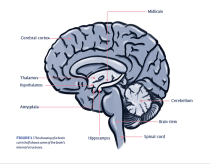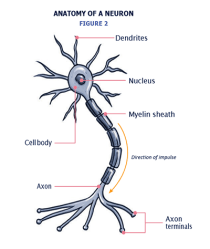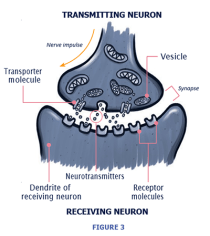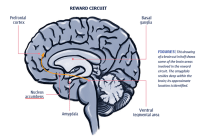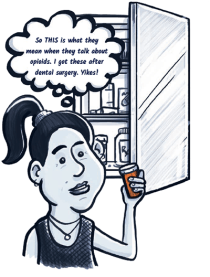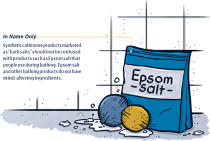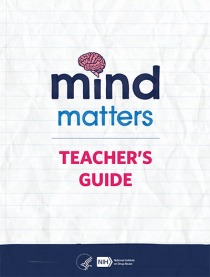
Hi there! Mind Matters (formerly referred to as Mind Over Matter) is a series that explores the ways that different drugs affect your brain, body, and life. In this issue, we are going to talk about how drugs affect the brain.
Introduction
This is the teacher’s guide for the “Mind Matters” series, developed by the National Institute on Drug Abuse (NIDA), part of the National Institutes of Health. “Mind Matters” includes nine engaging printed materials designed to help students in grades 5 – 8 understand the biological effects of drug misuse on the brain and body, along with identifying how these drug-induced changes affect both behaviors and emotions. There is no more important time to address these issues with adolescents than in the middle school years, when they are forming opinions about the health risks of drugs. These educational materials are also easy to print and use.
When used in combination with the printed materials, the background information and lesson plans contained in this guide will help students understand the physical reality of drug use and inspire curiosity about neuroscience. Some activities to reinforce the topics are suggested at the end of the guide. You can also develop some of your own.

- Brain Anatomy
BACKGROUND
The human brain is the most complex organ in the body. This three-pound mass of gray and white matter sits at the center of all human activity. You need it for everything you do — from breathing and thinking to enjoying a meal and creating artwork. The brain regulates your body’s basic functions, enables you to interpret and respond to everything you experience, and shapes your behavior. In short, your brain is you — everything you think and feel, and who you are. The brain has many internal structures, with some seen in Figure 1.
The brain is often compared to an incredibly complex and intricate computer. Instead of electrical circuits on the silicon chips that control our electronic devices, the brain consists of billions of cells, called neurons (Figure 2), which are organized into circuits and networks, working together as a team. Each neuron acts as a switch controlling the flow of information. If a neuron receives enough signals from other neurons it “fires,” sending its own signal on to other neurons in the circuit.
Different brain circuits are responsible for coordinating and performing specific functions, such as sensing our environment, thinking and reasoning, language abilities, and movement. Networks of neurons send signals back and forth to each other and among different parts of the brain, the spinal cord, and nerves in the rest of the body (the peripheral nervous system).
To transmit a message, a neuron releases a chemical neurotransmitter via transporter molecules into the gap (or synapse) between it and the next cell (Figure 3). The neurotransmitter crosses the synapse and attaches to receptors on the receiving neuron, like a key into a lock. This causes changes in the receiving cell. Other molecules called transporters recycle neurotransmitters (that is, bring them back into the neuron that released them), which limits or shuts off the signal between neurons.
HOW DO DRUGS AFFECT THE BRAIN?
Drugs interfere with the way neurons send, receive, and process signals through these neurotransmitters. Some drugs, such as marijuana and heroin, can activate receptors because their chemical structure mimics that of a natural neurotransmitter in the body. This allows the drugs to attach onto and activate the receptors. Although these drugs mimic the brain’s own chemicals, they don’t activate receptors in the same way as a natural neurotransmitter. This can lead to abnormal messages being sent through the network.
Other drugs, such as amphetamines or cocaine, can cause neurons to release abnormally large amounts of natural neurotransmitters which prevent the normal recycling of these brain chemicals by interfering with transporters (Figure 4). This also amplifies or disrupts the normal communication between neurons.
WHAT PARTS OF THE BRAIN ARE MOST AFFECTED BY DRUG USE?
Drugs can alter important brain areas that are necessary for life-sustaining functions and can drive the compulsive drug use that marks progression to a substance use disorder (SUD) and addiction. Brain areas affected by drug use include:
- The basal ganglia plays an important role in positive forms of motivation, including the pleasurable effects of healthy activities like eating, socializing, or playing a game. They are also involved in forming habits and routines. These areas form a key node of what is sometimes called the brain’s “reward circuit” (Figure 5). Drugs over-activate this circuit, producing the euphoria of the drug high. But with repeated exposure, the circuit adapts to the presence of the drug, diminishing its sensitivity and making it hard to feel pleasure from anything besides the drug.
- The amygdala plays a role in stressful feelings like anxiety, irritability, and unease, which characterize withdrawal after the drug high This withdrawal motivates the person to seek the drug again. This circuit becomes increasingly sensitive with increased drug use, and over time, a person with an SUD might use drugs not to get high, but simply to get temporary relief from this discomfort.
The prefrontal cortex powers the ability to think, plan, solve problems, make decisions, and exert self-control over This is also the last part of the brain to mature, making teens most vulnerable to the effects of drugs. Shifting balance between this circuit and the reward and stress circuits of the basal ganglia and amygdala reduce impulse control and make a person with an SUD seek the drug compulsively.
Some drugs — like opioids — also affect other parts of the brain, such as the brain stem, which controls basic functions critical to life, including heart rate, breathing, and sleeping. This is why overdoses can cause slowed breathing and death
- Marijuana
BACKGROUND
Marijuana is derived from the dried leaves and flowers of the cannabis plant. Delta-9-tetrahydrocannabinol (THC) is the main ingredient in marijuana that makes people high. Marijuana changes brain messages that alter sensory perception and coordination. This can affect how users see, hear, and feel stimuli and can delay reflexes.
HOW DOES MARIJUANA AFFECT THE BRAIN?
Marijuana has both short-and long-term effects on the brain.
Short-Term Effects:
When a person smokes marijuana, THC quickly passes from the lungs into the bloodstream. The blood carries the chemical to the brain and other organs throughout the body. When a person consumes marijuana the body absorbs the THC slowly, so the user may not feel the effects for 30 – 60 minutes.
Image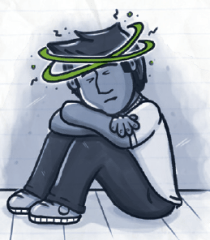
THC acts on specific brain cell receptors that ordinarily react to natural THC-like chemicals. These natural chemicals play a role in normal brain development and function.
Marijuana over-activates receptors in the parts of the brain that contain the highest number of these receptors. Other effects include:
- altered senses (for example, seeing brighter colors)
- altered sense of time
- changes in mood
- impaired body movement
- difficulty with thinking and problem-solving
- impaired learning and memory
- psychosis
- hallucinations (when taken in high doses)
- delusions (when taken in high doses)
Long-Term Effects:
Marijuana also affects brain development. When people begin using marijuana as teenagers, while the brain is still developing, the drug can impair thinking, memory, and learning functions, and affects how the brain builds connections between the areas necessary for these functions. Researchers are still studying how long marijuana’s effects last and if some changes may be permanent.
The ability to draw definitive conclusions about marijuana’s long-term impact on the human brain is often limited by the fact that in scientific studies, participants often use multiple substances. Also, there is usually limited data about the health and mental functioning of the participants prior to marijuana use or prior to any particular study.
WHAT ARE THE OTHER HEALTH EFFECTS OF MARIJUANA?
Marijuana use can have a wide range of effects, both physical and mental. Over the years, THC levels in the cannabis plant have grown increasingly higher, and today’s marijuana is more likely to cause side effects — in some cases, sending people to emergency rooms.
Physical Effects
Breathing problems – Marijuana smoke irritates the lungs, and people who smoke marijuana frequently can have the same breathing problems as those who smoke tobacco. These problems include daily cough and phlegm, more frequent lung illness, and a higher risk of lung infections. Whether marijuana smoking is linked to lung cancer remains an open question.1 While marijuana smoke contains cancer-causing combustion products, studies have failed so far to find a definitive link to lung cancer.
Lung Illnesses – Scientists are investigating recent serious lung illnesses and deaths related to vaping THC oil, sometimes added to nicotine liquid in vaping devices. In the meantime, public health experts are advising teens to stop using vaping products, especially if bought off the street.
Increased heart rate – Marijuana raises heart rate for up to three hours after smoking. This effect may increase the chance of a heart attack. Older people and those with heart problems may be at higher risk.
Problems with child development during and after pregnancy – If a pregnant woman uses marijuana, the drug may affect certain developing parts of the fetus’s brain. Prenatal marijuana exposure is associated with an increased risk of problems with attention,2 memory, and problem-solving compared to unexposed children.3 Research has linked marijuana use during pregnancy to low birth weight and a higher risk of preterm births.4 Some research also suggests that moderate amounts of THC are excreted into the breast milk of nursing mothers.5 With regular use, THC can reach amounts in breast milk that could affect the baby’s developing brain. Until more is known, experts advise pregnant women not to use marijuana.6
Intense nausea and vomiting – Regular, long-term marijuana use can lead some people to develop Cannabinoid Hyperemesis Syndrome. This causes users to experience regular cycles of severe nausea, vomiting, and dehydration, sometimes requiring emergency medical attention.7
REFERENCES
1National Academies of Sciences, Engineering, and The health effects of cannabis and cannabinoids: Current state of evidence and recommendations for research. Washington, DC: The National Academies Press; 2017 https://doi.org/10.17226/24625
2Richardson GA, Ryan C, Willford J, et Effects of prenatal marijuana exposure on child behavior problems at age 10. Neurotoxicology Teratology. 2000; 22(3):325-336.
3Richardson , Ryan C, Willford J, et al. Prenatal alcohol and marijuana exposure: Effects on neuropsychological outcomes at 10 years. Neurotoxicology Teratology. 2002; 24(3):309-320.
4 DJ, Walsh L, Weiss D, et Association between self-reported prenatal cannabis use and maternal, perinatal, and neonatal outcomes. JAMA. 2019; 322(2):145-152. doi:10.1001/jama.2019.8734
5 M, Wall Presence of delta9-tetrahydrocannabinol in human milk. New England Journal of Medicine. 1982; 307(13), 819-820. doi:10.1056/ NEJM198209233071311.
6 Committee Opinion Number 722: Marijuana Use During Pregnancy and Lactation, October 2017 (Reaffirmed 2019)
7 JA, Sawaya RA, Friedenberg (2011). Cannabinoid hyperemesis syndrome. Current Drug Abuse Reviews. 2011; 4(4):241-249.
Addiction
Research suggests that between nine and 30 percent of those who use marijuana will develop a marijuana use disorder — with addiction being the most severe form. Addiction means the brain has changed to the point that the teen is no longer able to quit using the drug, despite negative consequences. People who begin using marijuana before age 18 are 4 to 7 times more likely than adults to develop a marijuana use disorder.
Mental Effects
Long-term marijuana use has been linked to mental illness in some people, such as:
- temporary hallucinations and psychosis
- temporary paranoia and psychosis
- worsening symptoms in patients with schizophrenia — a severe mental disorder with symptoms such as hallucinations, paranoia, and disorganized thinking
Marijuana use has also been linked to other mental health problems, such as depression, anxiety, and suicidal thoughts among teens. However, study findings have been mixed.
HOW USEFUL IS MEDICAL MARIJUANA?
Scientists are studying two different ingredients of the marijuana plant for their possible use as medicines — THC and CBD. THC is the chemical that makes you high. It can possibly help decrease pain, inflammation (swelling and redness), and muscle control problems. Two THC-based medicines have been approved for help with nausea from chemotherapy, and appetite problems with HIV/AIDS patients.
CBD, which doesn’t make people high, has shown usefulness in reducing pain and inflammation, controlling epileptic seizures, and possibly even treating mental illness and addictions. A CBD-based medicine was recently approved to treat children with certain severe seizure disorders. However, the whole plant — in smoked or edible form — has not been approved by the U.S. Government for medical use. Some states allow the sale of marijuana for certain conditions, but more research is needed to prove its effectiveness. Smoked medicine in particular can cause lung and other health problems, and risks must be weighed against its benefits.
- Nicotine, Tobacco, and Vaping
BACKGROUND
Tobacco has been used for centuries. The first description of tobacco addiction is contained in a report by Spanish soldiers in the New World who claimed they could not stop smoking.
When nicotine was isolated from tobacco leaves in 1828, scientists began studying its effects in the brain and body. This research eventually showed that, although tobacco contains thousands of chemicals, the main ingredient that produces addiction is nicotine. More recent research has shown that the addiction produced by nicotine is extremely powerful and is at least as strong as addictions to other drugs such as heroin and cocaine.
HOW ARE TOBACCO AND NICOTINE USED?
People can smoke, chew, or sniff tobacco. Smoked tobacco products include cigarettes, cigars, bidis, and kreteks. Some people also smoke loose tobacco in a pipe or hookah (water pipe). Chewed tobacco products include chewing tobacco, snuff, dip, and snus. Snuff can also be sniffed. In recent years, nicotine has been extracted from certain types of tobacco plants to use as a liquid in electronic cigarettes.
HOW DO TOBACCO AND NICOTINE AFFECT THE BRAIN?
When a person uses any tobacco, the nicotine is absorbed into the blood. The nicotine immediately stimulates the adrenal glands to release the hormone epinephrine (adrenaline). Epinephrine stimulates the central nervous system and increases blood pressure, breathing, and heart rate. Nicotine activates the brain’s reward circuits and increases levels of the chemical messenger dopamine, which reinforces rewarding behavior, as with drugs such as cocaine and heroin. Studies suggest that other chemicals in tobacco smoke, such as acetaldehyde, may enhance nicotine’s effects on the brain.
WHAT ARE OTHER HEALTH EFFECTS OF TOBACCO USE?
The nicotine in tobacco is highly addictive, which causes the person to continue to smoke. But most of the severe health effects of smoking tobacco comes from other chemicals released when lit with flame, burned and smoked. The smoke from combustible tobacco products contains more than 7,000 chemicals and releases toxins that can lead to lung cancer, chronic bronchitis, and emphysema. It increases the risk of heart disease, which can lead to stroke or heart attack. Smoking has also been linked to leukemia and other cancers, cataracts, and pneumonia. All these risks apply to the use of any smoked product, including hookah tobacco. Smokeless tobacco increases the risk of cancer, especially mouth cancers.
Pregnant women who smoke cigarettes run an increased risk of miscarriage, stillborn or premature infants, or infants with low birth weight. Smoking while pregnant may also be associated with learning and behavioral problems in exposed children.
People who live or work with others who smoke are exposed to secondhand smoke, either coming from the burning end of the tobacco product or exhaled by the person who is smoking. This can cause health problems in both adults and children, such as coughing, phlegm, reduced lung function, pneumonia, and bronchitis. Children exposed to secondhand smoke are at an increased risk of ear infections, severe asthma, lung infections, and death from sudden infant death syndrome. Secondhand smoke exposure can also lead to lung cancer and heart disease.
WHAT ABOUT ELECTRONIC CIGARETTES AND VAPING DEVICES?
Electronic cigarettes — also known as e-cigarettes, e-vaporizers, or electronic nicotine delivery systems — are battery-operated devices that people use to inhale an aerosol, which typically contains nicotine (though not always), flavorings, and other They can resemble traditional tobacco cigarettes (cig-a-likes), cigars, or pipes, or even everyday items like pens or USB memory sticks.
Some common nicknames for e-cigarettes are:
- e-cigs
- vapes
- vape pens
- mods (customizable, more powerful vaporizers)
CAN VAPING HELP YOU QUIT SMOKING?
Some research suggests e-cigarettes may help people quit smoking cigarettes, while other data suggests that they can impede quitting and that they may open the door to traditional cigarette use for people who might not otherwise try them. Research so far suggests that vaping devices might be less harmful than combustible cigarettes when people who regularly smoke switch to them as a complete replacement, however, many people who use e-cigarettes continue to smoke regular cigarettes. The recent Surgeon General’s Report on Smoking Cessation, released in early 2020, says there is not enough evidence to conclude that vaping helps people stop smoking.
HOW CAN PEOPLE GET TREATMENT FOR NICOTINE ADDICTION?
Both behavioral treatments and medications can help people quit smoking, but the combination of medication with counseling is more effective than either alone.
The U.S. Department of Health and Human Services has established a national toll-free quitline, 1-800-QUIT- NOW, to serve as an access point for anyone seeking information and help in quitting smoking. Or go to teen.smokefree.gov which also has information about how to stop vaping.
- problems paying attention
- trouble sleeping
- increased appetite
- powerful cravings for tobacco
- depressed mood
In many e-cigarettes, puffing activates the battery-powered heating device, which vaporizes the liquid in the cartridge. The person then inhales the resulting aerosol or vapor (called vaping).
POPULARITY OF VAPING ON THE RISE
A survey collected in 2019 shows alarmingly high rates of e-cigarette use among teens, with rates doubling in the previous two years. In 2019, more than 1 in 4 students in 12th grade reported they had vaped in the past month, about 1 in 5 in the 10th grade, and 1 in 11 in eighth grade. These self-reported estimates come from the 2019 Monitoring the Future (MTF) survey, a nationally representative sample of eighth, 10th and 12th graders in schools nationwide, funded by a NIDA grant to the University of Michigan, Ann Arbor. For more information, visit Teen e-cigarette use doubles since 2017.
Vaping Marijuana
Some students put marijuana into vaping devices. Reports of marijuana vaping doubled in eighth, 10th and 12th graders between 2017 and 2019, with nearly 4% of eighth graders reporting they had vaped THC in the past month in 2019, compared to nearly 14% of 12th graders.
WHY DO TEENS VAPE?
The easy availability of these devices, alluring advertisements, appealing technology, and the belief that they’re safer than cigarettes have helped make them popular among teens. Students responding to NIDA’s Monitoring the Future Survey say they vape because they want to experiment, fit in with friends or because they are “hooked.” They also say they vape because they like certain flavors. This research has led to new rules banning the sale of mint and fruity vaping pods, starting in the year 2020. The alarming rise in vaping among teens also prompted the U.S. Government to raise the legal age for purchase of all tobacco and nicotine products to age 21, also starting in the year 2020.
IS VAPING SAFER THAN CIGARETTE SMOKING?
Scientists are still learning about the health effects of vaping, but we know that nicotine in any form is a highly addictive drug, and that e-liquids expose the lungs to a variety of chemical mixtures. While people are not inhaling toxic particles produced by burning tobacco, studies show that e-cigarette vapor contains known carcinogens and toxic chemicals, as well as potentially toxic metal nanoparticles from the device itself. In addition, the vapor is produced by heating an oil mixture, and human lungs were not designed to filter an ongoing intake of oil droplets.
REPORTS OF DEATHS RELATED TO VAPING
The Food and Drug Administration has alerted the public to thousands of reports of serious lung illnesses associated with vaping, including dozens of deaths, with some patients as young as 13. They are working with the Centers for Disease Control and Prevention (CDC) to investigate the cause of these illnesses. Many of the suspect products tested by the states or federal health officials have been identified as vaping products containing THC, the main psychotropic ingredient in marijuana. Some of the patients reported a mixture of THC and nicotine; and some reported vaping nicotine alone. Vitamin E acetate — used as a filler in the cartridge liquid — has been linked to the illnesses in many of the samples tested, and scientists continue to try to identify other potentially dangerous chemicals common to all patients. Until more details are known, FDA officials have warned people not to use any vaping products bought on the street, and they warn against modifying any products purchased in stores. They are also asking people and health professionals to report any adverse effects. The CDC has posted an information page for consumers, Outbreak of Lung Injury Associated with the Use of E-Cigarette, or Vaping, Products.
ROLE OF TEACHERS AND SCHOOL PERSONNEL
The most popular e-cigarette products look like USB memory sticks or thumb drives, often under the brand name JUUL. There are many reports of teens bringing these devices into classrooms with teachers not recognizing what they are. In addition, vaping devices do not leave the after-stench of tobacco cigarettes or secondhand smoke, so they can easily be used in school bathrooms with no telltale effects. It is critical that schools develop plans to monitor use of these devices. A recent study shows that many students who had used e-cigarettes by the time they started ninth grade were more likely than others to start smoking cigarettes and other smokable tobacco products within the next year.8
REFERENCES
8Leventhal AM, Strong DR, Kirkpatrick MG, et Association of electronic cigarette use with initiation of combustible tobacco product smoking in early adolescence. JAMA. 2015; 314(7):700-707. doi:10.1001/jama.2015.8950
HOW DOES NICOTINE USE LEAD TO ADDICTION?
For many who use these tobacco products, long-term brain changes brought on by continued nicotine exposure can result in addiction. People trying to quit may have withdrawal symptoms, including:
- irritability
- problems paying attention
- trouble sleeping
- increased appetite
- powerful cravings for tobacco
- depressed mood
CAN VAPING HELP YOU QUIT SMOKING?
Some research suggests e-cigarettes may help people quit smoking cigarettes, while other data suggests that they can impede quitting and that they may open the door to traditional cigarette use for people who might not otherwise try them. Research so far suggests that vaping devices might be less harmful than combustible cigarettes when people who regularly smoke switch to them as a complete replacement, however, many people who use e-cigarettes continue to smoke regular cigarettes. The recent Surgeon General’s Report on Smoking Cessation, released in early 2020, says there is not enough evidence to conclude that vaping helps people stop smoking.
HOW CAN PEOPLE GET TREATMENT FOR NICOTINE ADDICTION?
Both behavioral treatments and medications can help people quit smoking, but the combination of medication with counseling is more effective than either alone.
The U.S. Department of Health and Human Services has established a national toll-free quitline, 1-800-QUIT- NOW, to serve as an access point for anyone seeking information and help in quitting smoking. Or go to teen.smokefree.gov which also has information about how to stop vaping.
- Inhalants
BACKGROUND
Most inhalants are common household products that emit mind-altering chemical fumes when sniffed. These common products include paint thinner, fingernail polish remover, glues, gasoline, cigarette lighter fluid, and nitrous oxide. They also include fluorinated hydrocarbons found in aerosols, such as whipped cream, hair and paint sprays, and computer cleaners. Teachers should be especially aware that permanent markers, often found in schools, are also used as inhalants. The ingredient toluene — in most permanent markers — is especially toxic. It is unclear if there are toxic ingredients in various brands of scented water-based markers and scented pencils, because ingredients are not commonly listed. Teachers should not encourage use of these scented products without knowing if they are safe to smell.
The chemical structures of various inhalants are diverse, making it difficult to generalize about their effects. It is known, however, that the fumes can change brain chemistry and may permanently damage the brain and central nervous system.
HOW DO INHALANTS AFFECT THE BRAIN?
Inhalants enter the bloodstream quickly and circulate throughout the brain and body. They have direct effects on both the central nervous system (brain and spinal cord) and the peripheral nervous system (nerves throughout the body).
Using brain imaging techniques, such as magnetic resonance imaging (MRI), researchers have discovered marked structural changes in the brains of chronic inhalant users. These changes include a reduced size in certain brain areas, such as the cerebral cortex, cerebellum, and brain stem. These changes may account for some of the neurological and behavioral symptoms that long-term inhalant users exhibit, including impaired cognitive and motor skills.
WHAT ARE THE HEALTH EFFECTS OF INHALANTS?
Short-term effects include:
- slurred or distorted speech
- lack of coordination (control of body movement)
- euphoria (feeling high)
- dizziness
People may also feel light-headed or have hallucinations (images/sensations that seem real but aren’t) or delusions (false beliefs). With repeated inhalations, many people feel less self-conscious and less in control. Some may start vomiting, feel drowsy for several hours, or have a headache that lasts a while.
Long-term effects of inhalant use may include:
- liver and kidney damage
- hearing loss
- bone marrow damage
- loss of coordination and limb spasms (from nerve damage)
- delayed behavioral development (from brain problems)
- brain damage (from cut-off oxygen flow to the brain)
CAN A PERSON OVERDOSE ON INHALANTS?
Yes, a person can overdose on inhalants. An overdose occurs when a person uses too much of a drug and has a toxic reaction that results in serious, harmful symptoms or death.
Overdose symptoms can cause seizures and coma. They can even be deadly. Many solvents and aerosol sprays are highly concentrated, meaning they contain a large amount of chemicals with a lot of active ingredients. Sniffing these products can cause the heart to stop within minutes. This condition, known as sudden sniffing death, can happen to otherwise healthy young people the first time they use an inhalant. Using inhalants with a paper or plastic bag or in a closed area may cause death from asphyxiation (being unable to breathe).
CAN AN INHALANT OVERDOSE BE TREATED?
Inhalant overdose can lead to seizures or cause the heart to stop. Emergency responders try to treat the overdose by treating these conditions, with the intent of:
- restoring blood flow to the affected part of the brain
- restoring blood flow to the heart
- treating the organ problems
CAN INHALANTS CAUSE ADDICTION, A FORM OF SUBSTANCE USE DISORDER?
Image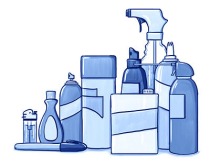
Although it’s not very common, repeated use of inhalants can lead to addiction, a form of substance use disorder (SUD). An SUD develops when continued use of the drug causes issues, such as health problems and failure to meet responsibilities at work, school, or home. An SUD can range from mild to severe, the most severe form being addiction.
Those who try to quit inhalants may have withdrawal symptoms that include:
- nausea
- loss of appetite
- sweating
- problems sleeping
- mood changes
HOW CAN PEOPLE GET TREATMENT FOR ADDICTION TO INHALANTS?
There are currently no approved medications to treat inhalant addiction, although research is active related to multiple types of addictive drugs. For now, health providers focus on behavioral approaches. These include:
- cognitive behavioral therapy, which helps patients identify and cope with potential triggers for drug use
- contingency management, or motivational incentives — providing rewards to patients who stay in treatment and remain substance-free
- community based recovery groups such as 12-step programs are not considered treatment but can provide support during the treatment process
- Opioids
BACKGROUND
Opioids are powerful drugs derived from the poppy plant that have been used for centuries to relieve pain. There are legal opioids (like prescription pain relievers) and illegal opioids (like heroin and illicit fentanyl). They are chemically related, produce similar effects, and can all lead to addiction and overdose. Prescription opioids are powerful, pain-reducing medications. Some prescription opioids are made directly from the opium poppy plant. Others are made by scientists in a laboratory although they have similar chemical structures.
HOW DO OPIOIDS AFFECT THE BRAIN?
Image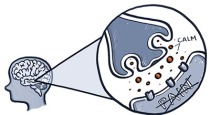
Opioids attach to and activate opioid receptors located in many areas of the brain, spinal cord, and other organs in the body, especially those involved in feelings of pain and pleasure.
When opioids attach to these receptors, they block pain signals sent between the brain and the body and release large amounts of dopamine in the brain’s reward regions. Dopamine is the chemical responsible for motivating our actions and repeating pleasurable experiences. This release can strongly reinforce drug use, making a person want to take the drug again and again despite negative consequences.
WHAT ARE THE MOST COMMONLY USED PRESCRIPTION OPIOIDS?
- Hydrocodone (Vicodin®)
- Oxycodone (OxyContin,® Percocet®)
- Oxymorphone (Opana®)
- Morphine (Kadian,® Avinza®)
- Codeine
- Fentanyl (also used illicitly)
WHAT ARE THE HEALTH EFFECTS OF OPIOIDS?
The short-term effects of opioids can relieve pain and make people feel relaxed. However, opioids can also have harmful effects, including:
- extreme drowsiness
- confusion
- nausea
- constipation
- slowed breathing
Over time, opioid use and misuse can lead to insomnia, muscle pain, heart problems, pneumonia, addiction, and overdose.
HOW DO PEOPLE USE OPIOIDS?
Prescription opioids are prescribed by doctors to treat pain and other health issues, such as coughing problems and diarrhea. When used as prescribed and for a short time, opioids are relatively safe. But when they are misused, they can be dangerous.
HOW DO PEOPLE MISUSE OPIOIDS?
- taking a prescription in a way or dose other than instructed
- taking someone else’s prescription
- taking prescription drugs only to get high
- mixing prescription opioids with alcohol or other drugs
- crushing pills or opening capsules, then:
- snorting the powder or
- dissolving the powder in water then injecting the liquid into a vein.
Some opioids, like heroin, aren’t available by prescription. People use those drugs just to get high.
HOW CAN OPIOID ADDICTION BE TREATED?
There are three medications that can be effective in treating opioid addiction. Methadone and buprenorphine are medicines that bind to the same receptors in the brain as opioids to help reduce cravings. These medicines are called agonists or partial agonists. Naltrexone is another medication, but it is called an antagonist because it prevents opioids from binding to the receptors at all, so the opioid cannot have an effect on the brain. These medications, combined with behavioral therapy, can be effective in treating opioid addiction. In addition, there is a newly approved medication called lofexidine that helps relieve withdrawal symptoms. If treatment does not work the first time, patients can work with their doctors to alter the treatment approach.
HOW CAN AN OPIOID OVERDOSE BE TREATED?
Opioid overdoses kill tens of thousands of people every year in the United States. Overdoses can be accidental or intentional. The good news is that scientists have developed a medication called naloxone that can reverse an overdose if given quickly enough. It is carried by most first responders. Families who care for people with opioid use disorder can get an easy-to-use naloxone nasal spray at many pharmacies without a personal prescription to have on hand in case of an emergency.
- Methamphetamine
BACKGROUND
Methamphetamine is a powerful, highly addictive stimulant that affects the central nervous system. Crystal methamphetamine is a form of the drug that looks like glass fragments or shiny, bluish-white rocks. It is chemically similar to amphetamine, a drug used to treat attention-deficit hyperactivity disorder (ADHD) and narcolepsy, a sleep disorder.
Other common names for methamphetamine include blue, crystal, ice, meth, and speed.
HOW DO PEOPLE USE METHAMPHETAMINE?
People can take methamphetamine by:
- smoking
- swallowing (pill)
- snorting
- injecting the powder that has been dissolved in water/alcohol
Because the high from the drug both starts and fades quickly, people often take repeated doses in a “binge and crash” pattern. In some cases, people take methamphetamine in a form of bingeing known as a “run,” giving up food and sleep while continuing to take the drug every few hours for up to several days.
HOW DOES METHAMPHETAMINE AFFECT THE BRAIN?
Methamphetamine increases the amount of the natural chemical dopamine in the brain. Dopamine is involved in body movement, motivation, and reinforcement of rewarding behaviors. The drug’s ability to rapidly release high levels of dopamine in reward areas of the brain strongly reinforces drug-taking behavior, making the user want to repeat the experience.
Short-Term Effects
Taking even small amounts of methamphetamine can result in many of the same health effects as those of other stimulants, such as cocaine or amphetamines. These include:
- increased wakefulness
- decreased appetite
- faster breathing
- rapid and/or irregular heartbeat
- increased blood pressure and body temperature
- extra energy and physical activity
Long-Term Effects
Methamphetamine has many negative consequences, including:
- extreme weight loss
- addiction
- severe dental problems
- intense itching, leading to skin sores from scratching
- anxiety
- changes in brain structure and function
- confusion and memory loss
- sleeping problems
- violent behavior
- paranoia – extreme and unreasonable distrust of others
- hallucinations – sensations and images that seem real though they aren’t
In addition, continued methamphetamine use causes changes in the brain’s dopamine system that are associated with reduced coordination and impaired verbal learning. Studies of people who used methamphetamine over the long-term show severe changes in areas of the brain involved with emotion and memory.9 This might explain many of the emotional and cognitive problems seen in those who use methamphetamine.
Although some of these brain changes may reverse after being off the drug for a year or more, other changes may not heal even after a long period of time.10 A recent study even suggests that people who once used methamphetamine have an increased risk of developing Parkinson’s disease, a disorder of the nerves that affects movement.11
People who inject methamphetamine are at increased risk of contracting infectious diseases such as HIV and hepatitis B and C. These diseases are transmitted through contact with blood or other bodily fluids that can remain on drug equipment. Methamphetamine use can also alter judgment and decision-making leading to risky behaviors, such as unprotected sex, which also increases risk for infectious diseases.
REFERENCES
9Volkow ND, Chang , Wang GJ, et al. Association of dopamine transporter reduction with psychomotor impairment in methamphetamine abusers. Am J Psychiatry. 2001; 158(3):377-382. doi:10.1176/appi.ajp.158.3.377.
10Wang GJ, Volkow ND, Chang , et al. Partial recovery of brain metabolism in methamphetamine abusers after protracted abstinence. Am J Psychiatry. 2004; 161(2):242-248. doi:10.1176/appi.ajp.161.2.242.
11Curtin K, Fleckenstein AE, Robison RJ, et Methamphetamine/amphetamine abuse and risk of Parkinson’s disease in Utah: a population-based assessment. Drug Alcohol Depend. 2015; 146:30-38. doi:10.1016/j.drugalcdep.2014.10.027.
CAN A PERSON OVERDOSE ON METHAMPHETAMINE?
Yes, a person can overdose on methamphetamine. An overdose occurs when the person uses too much of a drug and has a toxic reaction that results in serious, harmful symptoms or death.
Methamphetamine can also be mixed with other drugs that cause overdose, such as fentanyl.
HOW IS A METHAMPHETAMINE OVERDOSE TREATED?
Methamphetamine overdose often leads to a stroke, heart attack, or organ problems. Emergency responders try to treat the overdose by treating these conditions, with the intent of:
Image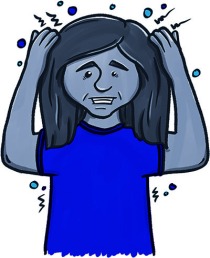
- restoring blood flow to the affected part of the brain (stroke)
- restoring blood flow to the heart (heart attack)
- treating the organ problems
HOW CAN PEOPLE GET TREATMENT FOR METHAMPHETAMINE ADDICTION?
There are currently no approved medications to treat methamphetamine addiction, although science is very actively researching potential new medicines.
For now, health providers focus on behavioral approaches. These include:
- cognitive behavioral therapy, which helps patients identify and cope with potential triggers for drug use
- contingency management, or motivational incentives — providing rewards to patients who stay in treatment and remain substance-free
- community-based recovery groups such as 12-step programs are not considered treatment but can provide support during the treatment process.
- K2/Spice and Bath Salts
BACKGROUND
Synthetic cannabinoids are human-made, mind-altering chemicals that are either sprayed on dried, shredded plant material so they can be smoked, or sold as liquids to be vaporized and inhaled in vaping devices. These products are also known as herbal or liquid incense.
These chemicals are called cannabinoids because they are similar to chemicals found in the marijuana plant. Synthetic cannabinoids are sometimes misleadingly called “synthetic marijuana” (or “fake weed”), and are often marketed as safe, legal alternatives to that drug. In fact, they are not safe and may have a more powerful impact on the brain with unpredictable effects and in some cases, can be dangerous and even life-threatening.
Synthetic cannabinoids are part of a group of drugs called new psychoactive substances (NPS). NPS are unregulated mind-altering substances that have become available in the marketplace and are intended to produce the same effects as illegal drugs. Some of these substances may have been around for years but have reentered the market in altered chemical forms.
Manufacturers sell these products in colorful foil packages and plastic bottles to attract consumers. They market these products under a wide variety of catchy brand names. Hundreds of brands now exist, including K2, Spice, Joker, Black Mamba, Kush, and Kronic.
For several years, synthetic cannabinoid mixtures have been easy to buy in drug paraphernalia shops, novelty stores, gas stations, and over the internet. Because the chemicals used in them have no medical benefit and a high potential for misuse, authorities have made it illegal to sell, buy, or possess some of these chemicals. However, manufacturers try to sidestep these laws by changing the chemical formulas in their mixtures.
Easy access and the belief that synthetic cannabinoid products are “natural” and therefore harmless, have likely contributed to their use among young people. Another reason for their continued use is that standard drug tests cannot easily detect many of the chemicals used in these products.
HOW DO PEOPLE USE SYNTHETIC CANNABINOIDS?
The most common way to use synthetic cannabinoids is to smoke the dried plant material. Users also mix the sprayed plant material with marijuana or brew it as tea. Other users buy synthetic cannabinoid products as liquids to vaporize in e-cigarettes.
HOW DO SYNTHETIC CANNABINOIDS AFFECT THE BRAIN?
Synthetic cannabinoids act on the same brain cell receptors as THC, the mind-altering ingredient in marijuana, so some side effects might be similar.
So far, there have been few scientific studies of the effects of synthetic cannabinoids on the human brain. But researchers do know that some of them bind more strongly than marijuana to the cell receptors affected by THC and can produce much stronger effects. The results can be unpredictable and dangerous.
Because the chemical composition of many synthetic cannabinoid products is unknown and may change from batch to batch, these products are likely to contain substances that cause dramatically different effects than the user might expect, and effects will vary with each batch.
Synthetic cannabinoid users report some effects similar to those produced by marijuana:
- elevated mood
- relaxation
- altered perception – awareness of surrounding objects and conditions
- symptoms of psychosis – delusional or disordered thinking detached from reality
Psychotic effects include:
- extreme anxiety
- confusion
- paranoia – extreme and unreasonable distrust of others
hallucinations – sensations and images that seem real though they are not
Image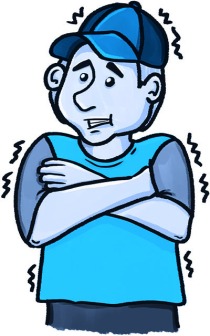
WHAT ARE SOME OTHER HEALTH EFFECTS OF SYNTHETIC CANNABINOIDS?
People who have used synthetic cannabinoids and have been taken to emergency rooms have shown severe effects including:
- rapid heart rate
- vomiting
- violent behavior
- suicidal thoughts
Can you overdose on synthetic cannabinoids?
Yes. An overdose occurs when a person uses too much of a drug and has a dangerous reaction that results in serious, harmful symptoms or death. Use of synthetic cannabinoids can cause toxic reactions; raise blood pressure; cause reduced blood supply to the heart; and cause kidney damage and seizures.
Deaths can also occur when street dealers add cheap, dangerous synthetic opioids, such as fentanyl, to the packaged mixture without the user knowing it.
ARE SYNTHETIC CANNABINOIDS ADDICTIVE?
Yes, synthetic cannabinoids can be addictive. Regular users trying to quit may have the following withdrawal symptoms:
- headaches
- anxiety
- depression
- irritability
Behavioral therapies and medications have not been specifically tested for treatment of addiction to these products. Health care providers should screen patients for possible co-occurring mental health conditions.
Synthetic Cathinones (Bath Salts)
Image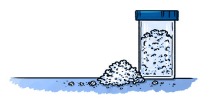
BACKGROUND
Synthetic cathinones, more commonly known as “bath salts,” are human-made stimulants chemically related to cathinone, a substance found in the khat plant. Khat is a shrub grown in East Africa and southern Arabia, where some people chew its leaves for their mild stimulant effects. Human-made versions of cathinone can be much stronger than the natural product and, in some cases, very dangerous.12
Synthetic cathinones usually take the form of a white or brown crystal-like powder and are sold in small plastic or foil packages labeled “not for human consumption.” They have been labeled as products like “bath salts,” “plant food,” “jewelry cleaner,” or “phone screen cleaner.
Like synthetic cannabinoids, synthetic cathinones are NPS, part of a group of drugs that concern public health officials.
People can buy synthetic cathinones online and in drug paraphernalia stores under a variety of brand names, which include:
- Bliss
- Cloud Nine
- Lunar Wave
- Vanilla Sky
White Lightning
HOW DO PEOPLE USE SYNTHETIC CATHINONES?
People typically swallow, snort, smoke, or inject synthetic cathinones.
HOW DO SYNTHETIC CATHINONES AFFECT THE BRAIN?
Much is still unknown about how synthetic cathinones affect the human brain. Researchers do know that synthetic cathinones are chemically similar to drugs like amphetamines, cocaine, and MDMA (ecstasy).
A study found that 3,4-methylenedioxypyrovalerone (MDPV), a common synthetic cathinone, affects the brain in a manner similar to cocaine, but is at least 10 times more powerful. MDPV is the most common synthetic cathinone found in the blood and urine of patients admitted to emergency departments after taking “bath salts.”13
WHAT ARE THE EFFECTS OF SYNTHETIC CATHINONES?
- paranoia – extreme and unreasonable distrust of others
- hallucinations – experiencing sensations and images that seem real but are not
- increased friendliness
- increased sex drive
- panic attacks
- excited delirium – extreme agitation and violent behavior
- raised heart rate, blood pressure, and chest pain
People who experience delirium often suffer from dehydration, breakdown of skeletal muscle tissue, and kidney failure. The worst outcomes are associated with snorting or needle injection. These drugs are also at risk for contamination from dangerous additives such as fentanyl, which can cause an overdose. Intoxication from synthetic cathinones has resulted in death.
ARE SYNTHETIC CATHINONES ADDICTIVE?
Yes, synthetic cathinones can be addictive. Animal studies show that rats will compulsively self-administer synthetic cathinones. Human users have reported that the drugs trigger intense, uncontrollable urges to use the drug again. Taking synthetic cathinones can cause strong withdrawal symptoms that include:
- depression
- anxiety
- tremors
- problems sleeping
paranoia
Image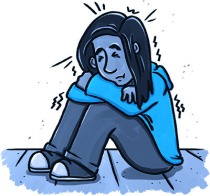
HOW CAN PEOPLE GET TREATMENT FOR ADDICTION TO SYNTHETIC CATHINONES?
There are currently no approved medications to treat addiction to synthetic cathinones, although research is active related to multiple types of addictive drugs. For now, health providers focus on behavioral approaches. These include:
- cognitive behavioral therapy, which helps patients identify and cope with potential triggers for drug use
- contingency management, or motivational incentives — providing rewards to patients who stay in treatment and remain substance-free
- community based recovery groups such as 12-step programs are not considered treatment but can provide support during the treatment process.
REFERENCES
12Baumann MH Awash in a sea of “bath salts”: implications for biomedical research and public Addict Abingdon Engl. 2014; 109(10):1577-1579. doi:10.1111/add.12601.
13Baumann MH, Lehner KR, Partilla JS, et Powerful cocaine-like actions of 3,4-methylenedioxypyrovalerone (MDPV), a principal constituent of psychoactive “bath salts” products. Neuropsychopharmacology. 2013; 238(4):552-562. doi:10.1038/npp.2012.204.
- Cocaine
BACKGROUND
Cocaine is a powerfully addictive stimulant drug made from the leaves of the coca plant native to South America. Recreational cocaine use is illegal. As a street drug, common cocaine looks like a fine, white, crystal powder. Street dealers often mix it with things like cornstarch, talcum powder, flour, or even cheap, dangerous synthetic opioids to increase profits.
Image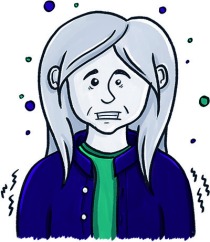
Popular nicknames for cocaine include:
- Blow
- Coke
- Rock
- Snow
HOW DO PEOPLE USE COCAINE?
People snort cocaine powder through the nose or rub it into their gums. Others dissolve the powder and inject it into the bloodstream. Some people inject a combination of cocaine and heroin, called a speedball.
Another popular method is to process it into a rock crystal, heating it and inhaling the vapors, called “freebasing.” This form of cocaine is called “crack,” which refers to the crackling sound of the rock as it’s heated. Some people also smoke crack by sprinkling it on marijuana or tobacco then smoking it like a cigarette.
People who use cocaine often take it in binges — taking the drug repeatedly within a short time, at increasingly higher doses — to maintain their high.
HOW DOES COCAINE AFFECT THE BRAIN?
Cocaine increases levels of the natural chemical messenger dopamine in brain circuits related to the control of movement, habitual behaviors, and reward.
Normally, dopamine recycles back into the cell that released it, shutting off the signal between nerve cells. However, cocaine prevents dopamine from being recycled, causing large amounts to build up in the space between two nerve cells, stopping their normal communication. This flood of dopamine in the brain’s reward circuit strongly reinforces drug-taking behaviors, because the reward circuit eventually adapts to the excess of dopamine. As a result, people take stronger and more frequent doses to feel the same high and to get relief from withdrawal.
How does cocaine affect the body?
- constricted blood vessels
- dilated pupils
- nausea
- raised body temperature and blood pressure
- fast or irregular heartbeat
- tremors and muscle twitches
- restlessness
Short-term effects
- extreme happiness and energy
- mental alertness
- hypersensitivity to sight, sound, and touch
- irritability
- paranoia – extreme and unreasonable distrust of others
Some people find that cocaine helps them perform simple physical and mental tasks more quickly, although others experience the opposite effect.
Large amounts of cocaine can lead to bizarre, unpredictable, and violent behavior. Cocaine’s effects appear almost immediately and disappear within a few minutes to an hour. How long the effects last and how intense they are depends on the method of use. Injecting or smoking cocaine produces a quicker and stronger but shorter- lasting high than snorting. The high from snorting cocaine may last 15 to 30 minutes. The high from smoking it may last 5 to 10 minutes.
Long-term effects
Image
Cocaine decreases appetite, and can cause malnourishment. It is also linked to movement disorders, including Parkinson’s disease, which may occur after many years of use.
Some long-term health effects of cocaine depend on the method of use and include the following:
- snorting: loss of smell, nosebleeds, frequent runny nose, and problems with swallowing
- smoking: cough, asthma, respiratory distress, and higher risk of infections like pneumonia
- orally: severe bowel decay from reduced blood flow
- needle injection: higher risk for contracting HIV, hepatitis C, and other bloodborne diseases, skin or soft tissue infections, as well as scarred or collapsed veins
CAN A PERSON OVERDOSE ON COCAINE?
Yes, a person can overdose on cocaine. An overdose occurs when a person uses enough of a drug to produce serious adverse effects, life-threatening symptoms, or death. An overdose can be intentional or unintentional.
Death from overdose can occur on the first use of cocaine or unexpectedly thereafter. Many people who use cocaine also drink alcohol at the same time, which is particularly risky and can lead to overdose. Others mix cocaine with heroin, another dangerous — and deadly — combination.
Some of the most frequent and severe health consequences of overdose are irregular heart rhythm, heart attacks, seizures, and strokes. Other symptoms of cocaine overdose include difficulty breathing, high blood pressure, high body temperature, hallucinations, and extreme agitation or anxiety.
Street dealers sometimes mix cocaine with other drugs such as the stimulant amphetamine, or synthetic opioids, including fentanyl. Adding cheaper, synthetic opioids to cocaine is especially risky when people using cocaine don’t realize it contains this dangerous additive. An increasing number of overdose deaths among cocaine users is likely related to this tampered cocaine.
HOW CAN A COCAINE OVERDOSE BE TREATED?
There is no specific medication that can reverse a cocaine overdose. Management involves supportive care and depends on the symptoms present. For instance, because cocaine overdose often leads to a heart attack, stroke, or seizure, emergency responders try to treat the overdose by treating these conditions:
- restoring blood flow to the heart (heart attack)
- restoring oxygen-rich blood supply to the affected part of the brain (stroke)
- stopping the seizure
HOW DOES COCAINE USE LEAD TO ADDICTION?
As with other drugs, repeated use of cocaine can cause long-term changes in the brain’s reward circuit and other brain systems, which may lead to addiction. The reward circuit eventually adapts to the extra dopamine caused by the drug, becoming steadily less sensitive to it. As a result, people take stronger and more frequent doses to feel the same high they did initially and to obtain relief from withdrawal.
Withdrawal symptoms include:
- depression
- fatigue
- increased appetite
- unpleasant dreams and insomnia
- slowed thinkingneedle injection: higher risk for contracting HIV, hepatitis C, and other bloodborne diseases, skin or soft tissue infections, as well as scarred or collapsed veins
WHAT IS THE TREATMENT FOR COCAINE ADDICTION?
There are currently no approved medications to treat cocaine addiction, although science is very actively researching potential new medicines. For now, health providers focus on behavioral approaches. These include:
- cognitive behavioral therapy, which helps patients identify and cope with potential triggers for drug use
- contingency management, or motivational incentives — providing rewards to patients who stay in treatment and remain substance-free
- community based recovery groups such as 12-step programs are not considered treatment but can provide support during the treatment
- Prescription Stimulants
BACKGROUND
Prescription stimulants are medicines generally used to treat attention-deficit hyperactivity disorder (ADHD) and narcolepsy — uncontrollable episodes of deep sleep. They increase alertness, attention, and energy.
WHAT ARE COMMON PRESCRIPTION STIMULANTS?
- Dextroamphetamine (Dexedrine®)
- Dextroamphetamine/amphetamine combination product (Adderall®)
- Methylphenidate (Ritalin®, Concerta®)
- Lisdexamfetamine dimesylate (Vyvanse®)
Popular slang terms for prescription stimulants include Speed, Uppers, and Vitamin R.
HOW DO PEOPLE USE AND MISUSE PRESCRIPTION STIMULANTS?
Image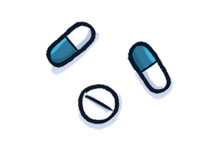
Most prescription stimulants come in tablet, capsule, or liquid form, which a person takes by mouth. Misuse of a prescription stimulant means:
- taking medicine in a way or dose other than prescribed
- taking someone else’s medicine
- taking medicine only to get high
When misusing a prescription stimulant, people can swallow the medicine in its normal form. Alternatively, they can crush tablets or open the capsules, dissolve the powder in water, and inject the liquid into a vein. Some people also snort or smoke the powder.
HOW DO PRESCRIPTION STIMULANTS AFFECT THE BRAIN AND BODY?
Prescription stimulants increase the activity of the brain chemicals dopamine and norepinephrine. Dopamine is involved in the reinforcement of rewarding behaviors. Norepinephrine affects blood vessels, blood pressure and heart rate, blood sugar, and breathing.
SHORT-TERM EFFECTS
People who use prescription stimulants report feeling a “rush” (euphoria) along with the following:
- increased blood pressure and heart rate
- increased breathing decreased blood flow
- increased blood sugar
- opened-up breathing passages
- decreased appetite
At high doses, prescription stimulants can lead to a dangerously high body temperature, an irregular heartbeat, heart failure, and seizures.
WHAT ARE THE LONG-TERM EFFECTS?
Repeated misuse of prescription stimulants, even within a short period, can cause psychosis, anger, or paranoia. If the drug is injected, it is important to note that sharing drug injection equipment and having impaired judgment from drug misuse can increase the risk of contracting infectious diseases such as HIV and hepatitis.
Do Prescription Stimulants Make You Smarter?
Image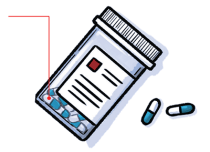
Stimulants have been misused as an “academic performance enhancer,” (for example, to stay awake all night to cram for an exam). That’s why people sometimes refer to them as “study drugs.” However, there is no evidence that students not diagnosed with ADHD who misuse stimulants get better grades, although there might be several other reasons those students struggle in school. Taking prescription stimulants for reasons other than treating ADHD or narcolepsy could lead to harmful health effects, such as addiction, heart problems, or psychosis.
CAN A PERSON OVERDOSE ON PRESCRIPTION STIMULANTS?
Yes, a person can overdose on prescription stimulants. An overdose occurs when the person uses enough of the drug to produce a life-threatening reaction or death. Overdoses can be accidental or intentional.
When people overdose on a prescription stimulant, they most commonly experience several different symptoms, including restlessness, tremors, overactive reflexes, rapid breathing, confusion, aggression, hallucinations, panic states, abnormally increased fever, muscle pains and weakness.
They also may have heart problems, including an irregular heartbeat leading to a heart attack, nerve problems that can lead to a seizure, abnormally high or low blood pressure, and circulation failure. Stomach issues may include nausea, vomiting, diarrhea, and abdominal cramps. In addition, an overdose can result in convulsions, coma, poisoning, and death.
HOW CAN A PRESCRIPTION STIMULANT OVERDOSE BE TREATED?
Because prescription stimulant overdose often leads to a heart attack or seizure, the most important step to take is to call 911 so a person who has overdosed can receive immediate medical attention. Emergency responders try to treat the overdose with the intent of restoring blood flow to the heart and stopping the seizure with care or with medications if necessary.
CAN PRESCRIPTION STIMULANT MISUSE LEAD TO SUBSTANCE USE DISORDER AND ADDICTION?
Image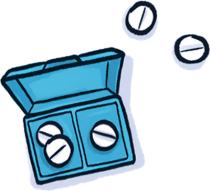
Yes, misuse of prescription stimulants can lead to a substance use disorder (SUD), which takes the form of addiction in severe cases. Long-term use of stimulants, even as prescribed by a doctor, can cause people to develop a tolerance, which means that they need higher and/or more frequent doses of the drug to get the desired effects. An SUD develops when continued use of the drug causes issues, such as health problems and failure to meet responsibilities at work, school, or home. Concerns about use should be discussed with a health care provider.
People who have an SUD and stop using the prescription stimulant can experience withdrawal. Withdrawal symptoms can include:
- fatigue
- depression
- sleep problems
- Suggested Classroom Activities
Following are some suggestions for activities for your students. These can be used for any of the topics covered in this guide.
DRUG USE/MISUSE AND JOB PERFORMANCE
In one large envelope, place the names of occupations (for example, an airline pilot, a professional athlete, a doctor, a waiter/waitress) and in another envelope, place the names of specific drugs. Students then randomly select one example from each envelope and act-out, in front of the class, how they think the drug use might specifically affect the performance of a person in that occupation. Students will identify the brain regions and structures affected by drug use, and describe the link between these structures and behaviors.
DISRUPTIONS
Read a list of 20 words aloud to the class and then ask students to write down as many as they can remember.
Then have several students stand, in pairs, at various points in the room and carry on loud conversations while you read a list of 20 new words to the remainder of the class. Ask students to again write down as many words as they can remember. Compare performance between the two trials.
Mention to the students that, like the disruptive pairs of students, drug use can interfere with normal information transfer and memory.
SURVEY SAYS
Ask students to create a survey. In small groups, students will develop a list of 3 – 5 questions — true/false or open ended — about one of the drugs discussed in this guide, (including health effects of drug use/misuse, common or slang terms for the drug, identifying characteristics of the drug, etc…).
The students will interview classmates and teachers to see what they know. Tally the survey results and share them on the morning announcements, including the correct answers.
SPREAD THE WORD
Ask the students to work in small groups to create posters illustrating important facts about different drugs and their health effects. Hang the posters in the classroom, cafeteria, halls or anywhere else permissible.
GO SOCIAL
Students can also create a week’s worth of social media posts that dispel myths or confusion about drug use/misuse.
TAKE THE IQ CHALLENGE
Have students test their knowledge by taking the NIDA Kahoot! National Drug and Alcohol IQ Challenge Quiz.
THE DOLLARS AND CENTS OF VAPING/SMOKING
Ask students to investigate how much it costs to buy vaping or smoking products. On index cards or slips of paper write different frequencies of nicotine use (e.g. 3 times a day; once a week; once a day; 5 times a month, etc) and put them in a bag or box. In another bag or box put index cards or slips of paper with nicotine products (e.g. pack of cigarettes, vaping device, pods, bottles of vape juice, e-cigarettes, etc). Students will pick one of the frequencies and one of the products then do the math to determine how much it would cost them to maintain that level of nicotine use.
OTHER RESOURCES
Learn more about NDAFW. For information about how to quit smoking, including how to stop vaping, go to teen.smokefree.gov.

